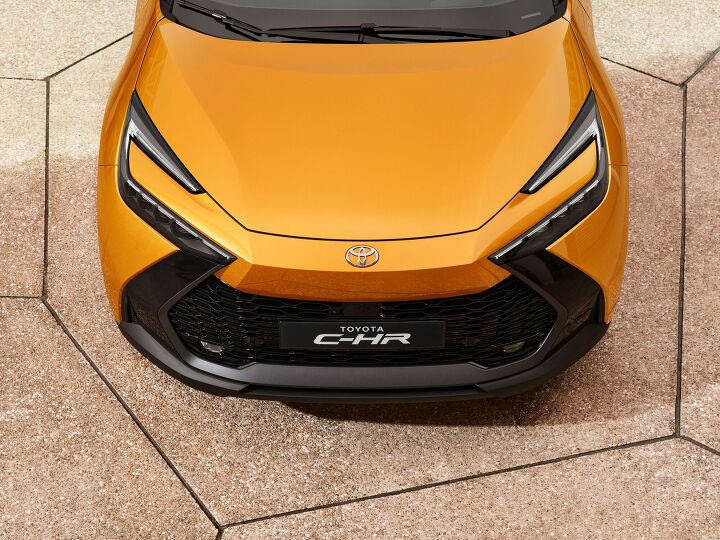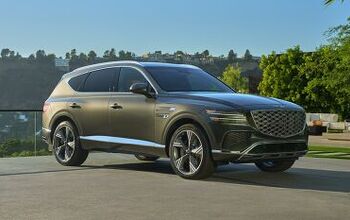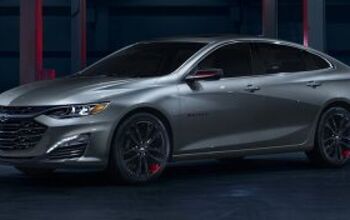2024 Toyota C-HR Debuts Elsewhere: Does Our Market Care?

Toyota has released the second generation of the C-HR subcompact crossover and looks to have made numerous improvements to the vehicle. But it doesn’t sound like we’ll be seeing it on our market after the original model failed to resonate with North American consumers.
We also have the Toyota Corolla Cross available for purchase, resulting in some troublesome overlap. While still extremely slow in its base configuration, the Cross ended up being significantly quicker than the C-HR and offered improved utility for a little less money. However, with the new generation having addressed some of the discontinued model’s shortcomings, one wonders if the new C-HR would have a better chance were it to be shipped stateside.
The original’s 2.0-liter engine offered 144 horsepower and 139 lb-ft of torque. But the combination failed to see the crossover reach 60 mph in under 11 seconds. That’s really slow for a modern automobile and was made worse by the vehicle’s extremely bland driving dynamics. Though that’s been an issue for crossovers in general since they came into existence.
Still, none of the above ended up being a trade-off for improved utility or sublime fuel economy. The rear seats on the C-HR were exceptionally tight and there was not a lot of room for storage behind them. Meanwhile, customers were getting the kind of fuel economy one would expect from a modern performance sedan. Hell, even the Honda Civic Type R is supposed to yield 36 mpg on the highway when the C-HR was only able to manage 31 mpg.
While arguably less interesting to look at, the Corolla Cross managed to address every one of those issues and opened up the door for customers who might want to option all-wheel drive and a hybrid powertrain. Granted, the Mazda CX-30 is light years better to drive and there’s a slew of excellent Hyundai and Kia-branded crossovers that you should probably cross-shop. But the Corolla Cross basically guaranteed there would be no room for the C-HR at American Toyota dealerships.
Would that remain true if we had held out for the second generation?
The new model is clearly designed by the same team that worked up the all-new Toyota Prius. While the C-HR is noticeably shorter in overall length, the manufacturer probably could have branded it as the Prius Sport Cross. Now hybrid only, with customers having the ability to choose between the base 1.8-liter hybrid or larger 2.0-liter hybrid that can be paired with optional all-wheel drive. The larger powertrain is even available as a plug-in version that makes 223 horsepower and supposedly offers 41 miles of all-electric range. Though we imagine that figure would come down a bit if certified by the EPA.
Models equipped with the base 1.8-liter are supposed to be 100 kilometers per hour (62 mph) in 9.9 seconds. While that’s not fast, it’s over a second quicker than the previous generation. Front-drive versions of the 2.0-liter are said to take 8.1 seconds to reach 62 mph, while the all-wheel drive alternative is supposed to take 7.9 seconds. The PHEV is a little faster at 7.4 seconds. But they all tap out at 112 mph, while the 1.8-liter isn’t supposed to do more than 106 mph.
A decidedly more modern interior has been fitted to the second-gen C-HR, offering a 12.3-inch digital instrument panel and identically sized central touch screen. But Toyota has wisely decided to retain physical buttons for the features you’re likely to interface with on a daily basis. European regulations guarantee a slew of electronic nannies bundled under the banner of “advanced driving aids.” This includes a feature on the PHEV that automatically switches the car to EV operation when it enters a government-identified low emission zone (LEZ).
Slicker versions of the model are available with a head-up display, panoramic roof, upgraded JLB audio systems, and endlessly customizable ambient lighting. The latter option even has the ability to be tweaked to change as the day progresses, giving you hourly color changes or specific themes for the kind of driving you’re doing. Interior lighting can even change to alert drivers to hazards, lighting the cabin up in red to indicate the car is worried about the possibility of a collision.
The Smart Connect multimedia package will be available, offering a voice assistant, wireless smartphone connection via Apple CarPlay or Android Auto, and loads of ways to control the vehicle via your smartphone. Automatic parking (even without the owner being in the vehicle) will be an option, as will a digital key system, where the user only has to have their phone on their person to access and start the car.
Toyota said sustainability and customization were key components of the new C-HR and the car comes with the ability to save three driver presets that are accessible via the steering wheel. There is also a slew of flashy paint options, including some two-tone selections.
Upholstery is said to be made from recycled materials and will be offered in some unique configurations. The GR Sport Premiere Edition comes with an even flashier interior with exterior paint options to match. Though nobody should expect a bump in performance just because it’s wearing the GR badge.
The segment is over-saturated and we already have the Corolla Cross, so it’s not like we needed the 2024 Toyota C-HR. But something tells me that the manufacturer would have had better luck with the original if it had more in common with the updated model. Sound off if you’d like to have the chance to test drive one or are just glad it’s gone.
[Images: Toyota]
Become a TTAC insider. Get the latest news, features, TTAC takes, and everything else that gets to the truth about cars first by subscribing to our newsletter.

A staunch consumer advocate tracking industry trends and regulation. Before joining TTAC, Matt spent a decade working for marketing and research firms based in NYC. Clients included several of the world’s largest automakers, global tire brands, and aftermarket part suppliers. Dissatisfied with the corporate world and resentful of having to wear suits everyday, he pivoted to writing about cars. Since then, that man has become an ardent supporter of the right-to-repair movement, been interviewed on the auto industry by national radio broadcasts, driven more rental cars than anyone ever should, participated in amateur rallying events, and received the requisite minimum training as sanctioned by the SCCA. Handy with a wrench, Matt grew up surrounded by Detroit auto workers and managed to get a pizza delivery job before he was legally eligible. He later found himself driving box trucks through Manhattan, guaranteeing future sympathy for actual truckers. He continues to conduct research pertaining to the automotive sector as an independent contractor and has since moved back to his native Michigan, closer to where the cars are born. A contrarian, Matt claims to prefer understeer — stating that front and all-wheel drive vehicles cater best to his driving style.
More by Matt Posky
Latest Car Reviews
Read moreLatest Product Reviews
Read moreRecent Comments
- Fred No idea why someone would interested in buying this at the price point. I'm pro-ev but a quick search can pull-up a lot more value at lower costs. I like the Fiat design but I couldn't stomach paying $37k for limited range and a super tight back seat.
- 28-Cars-Later For the you-gotta-be-rich-to-afford-a-cheap-car crowd, Versa is the winner here IMO. Buy it new and pay the $300ish (?) note, but enjoy at least five years with relative reliability assuming historical average miles. Based on MY19, Manheim expects the "S" to be worth $5,975 in roughly five years with "retail" value being $12,650. Nissan and other second or third tier marques will give more on a new trade so assuming 20 OTD with incentives its a 12K/$2,400 depreciation over 5 years excluding interest and it probably could be kept another year or two before the Nissan in it starts to show. Mirage in this comparison is the new buy used on the cheap and run it till the wheels fall off. I'm loathe to compare it to either the Panther or 240 (since I don't believe it could physically last as long as either) but something in the vein of car you could repair yourself on the cheap which was originally intended for Third World conditions. Based on MY19, the ES hatch is worth $4K even with avg miles of 72,740 and "retail" value at $9,650. I personally see it as lot poison and could see savvy buyers making off with one of these near or below wholesale while Nissan is a staple of the subprime crowd and is much easier to finance. MC beings up an interesting contender in the used Chevy Bolt, whose wholesale is $12,050 for MY19 in LT trim with avg lower miles of 33,017. While this is very intriguing, financing is going to be the story here since Nissan or I imagine Mitsubishi could put buyers into half decent rates despite poor credit where a Bolt is "going to the street" and getting whatever high rate is being offered now. Assuming one can handle their own charging, Bolt does offer a lower maintenance cost and used I believe buyers have a higher chance of a white collar professional's commuter condition than what they will find in a used Nissan or Mitsu runabout. The risk to our theoretical buyer IMO is that the Bolt will straight up fail at some point in the future, either not take a charge or even turn on and for the higher wholesale entry point I say the Mitsu is a better choice since it likely won't completely fail and can very cheaply be replaced. Additional: For your kid/nephew/niece/any "middle class" child, I think Bolt is probably the better proposition here but I'd be out of the trade in 36 mos personally. For those truly on their own with no emergency support system, I'd shy away.
- Jbltg It's interesting to note that in the Japan domestic market, where cars are built to order and dealers maintain barely any stock, that there are many, many color options. Really good ones, but no one seems to bite. Most of the cars on the road there are the same boring colors that we have. Go figure.My pet peeve is black interiors. Too depressing, and shows every speck of dust and dirt.
- IBx1 Dealerships flood the market with grayscale cars to commodify them and drive down resale value. Green and yellow cars hold their value best because they cannot easily be replaced, but you can throw a rock and hit fifty shades of gray.
- SCE to AUX Appliances (household and vehicular) have limited color choices, that's why.But today, if you want a crazy color, just buy a plain one and get it wrapped.









































Comments
Join the conversation
The first-gen C-HR was pretty bizarre looking, especially the at the rear. I'm sure that didn't help sales. Its main competition seems to be the Honda HR-V, which sold better. The first-gen HR-V was a little more normal looking, even with its sad clown taillights. The second-gen restyle fixed that.
Neither Toyoduh or Honduh have had a beautiful design in decades.